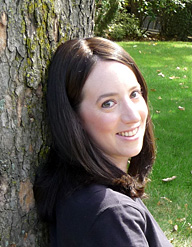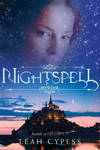written by David Steffen
This is the first, and quite possibly the only, year that I’ve been eligible to vote for the Nebula Awards. The Nebula Awards, for those who don’t know, are one of the biggest awards of science fiction fandom. This is the one voted by members of Science Fiction/Fantasy Writers of America, as opposed to the fan-voted Hugo awards.
So to make the most of it, I’m reading as many of the nominees as I can find to do before the voting period ends. Here are my rankings of the Short Story category in order of preference from favorite to least (for the voting I pick only one, but to flesh it out as a full review I found this helpful). The Short Story category covers all speculative fiction stories of 7500 words or less.
Nebula Award for Best Short Story
1. Five Ways to Fall in Love on Planet Porcelain by Cat Rambo (Near + Far)
Tikka works as a Minor Propagandist on the fantastical Planet Porcelain, where all the residents are all made of varying qualities of clay or porcelain. She is one of the very few of the lower-class variety to find employment in an upper-class region. Having spent so much time writing top five lists intended to attract tourists to the planet, much of the story is told in a numbered format as she is used to structuring her thinking that way. She meets an off-world stranger, and forges a connection with him.
This was first published in Cat’s excellent Ace-Double style dual anthology. A solid and emotional connection with the character, with an interesting setting and occupation. I really felt for her.
2. Immersion by Aliette de Bodard (Clarkesworld 6/12)
A very interesting setting, set in Longevity, a world which has been recently conquered by a galaxy-spanning Empire. The war is over, but the conflict continues as the Empire sends tourists through to absorb the culture. The biggest element of this absorption is a technology called an immerser, which all of the Imperials use heavily to interact with their world, acting at its most basic level as a translator but altering perceptions of reality in everything you do. To deal with Imperials at all, the locals have to user the immersers as well. It’s a battle to maintain your own beliefs and perceptions in the face of reality overlays.
This was published in Clarkesworld, where I first heard it on their podcast. It’s a solid story, well written. The worldbuilding in this one was especially good.
3. Robot by Helena Bell (Clarkesworld 9/12)
Written as instructions to a domestic robot that also acts as a medical aid. The instructions make it very clear that this robot is meant to follow these instructions very closely. The robot is meant to eat the narrator’s dead flesh as a disease eats away at her. This one sided conversation has all kinds of nuances that you are left to unravel on your.
This was published in Clarkesworld, where I heard it on the podcast. There are some seriously creepy undertones that seem to suggest there’s something deeper. I’m not sure I was ever able to fully unravel them. It served as an interesting puzzle, especially trying to understand the narrator’s motivations and personality only from her instructions. It’s very well written, and has some definite emotional connection. The reason I didn’t rank this one higher is that I didn’t feel there was any character or plot arc–nothing changed. I enjoyed it for sure, but to pick it as my favorite story of the year it has to have something more.
This story also seriously needed a better title. Single-word titles, when the word is from the dictionary, are often not very evocative. But this is the least evocative title I think I’ve ever seen. I saw this on a suggested reading list for the Nebula, and I knew I must have heard it on the Clarkesworld podcast but the title brought back absolutely no memory of the story. I’m sure I’ve read dozens of stories in the last year that involved some kind of robot, and I didn’t have any recollection which one it would be.
4. The Bookmaking Habits of Select Species by Ken Liu (Lightspeed 8/12)
This is written as a sort of documentary of the writing and reading habits of interstellar species, a half dozen or so very interesting ideas.
Ken Liu is a great writer. He wrote last year’s “The Paper Menagerie”, which was a well-deserved winner last year. This story showcases some of Ken’s great creative thinking, but to me it read more like a set of outlines that he never got around to making into stories. Among other things, there are no characters, just alien races. They’re great ideas! But I’d rather read the stories, instead of the outlines. To pick something as the best story of the year, I want a plot and characters.
This was published in Lightspeed, where I heard it on their podcast.
5. Fragmentation, Or Ten Thousand Goodbyes by Tom Crosshill (Clarkesworld 4/12)
The story of a dying mother and her son Rico who wants to preserve her in some fashion after. They can create digital uploads of people who can live in virtual environments. He is trying to plan ahead for her death, planning an environment for her simulacrum to live in.
This story has a good emotional core, and there is a character arc. I felt like I should have enjoyed it more. It seemed to me like the core idea (which was referred to in the title) was meant to be deep and philosophical since the entire story focused around it, but it never really spoke to me.
This was published in Clarkesworld, where I heard it on the podcast.
6. Nanny’s Day by Leah Cypess (Asimov’s 3/12)
A story that takes place in a future where anti-bioist parenting movements are the norm. Working mothers turn for more and more of their childcare to their nannies. After a landmark case kicks up the anti-bio-ist movement that says that biological parents should have no priority over custody of their own children, encouraging the child to choose who he/she wants to be their guardian. Parents have become paranoid, to the point that no one keeps nannies for more than a few months at a time. The protagonist is a mother who suspects that her nanny is going to try to make a grab for custody.
This was published in Asimov’s, and Leah posted it to her website to read for free. I didn’t really care for this one. It had a character arc, and a plot arc, which are definite pluses. But it just felt very preachy to me very early on, a lecture more than anything, and that feeling never went away. It was well written, but it was just so heavy on message I just couldn’t get into it. Not the story for me.
7. Give Her Honey When You Hear Her Scream by Maria Devahna Headley (Lightspeed 7/12)
This story is about… Well, if you know what it’s about, feel free to let me know. A… love story between a magician and a witch… I think.
This one was published in Lightspeed, where I heard it on their podcast. Quite frankly, I found this one completely incomprehensible. Each section switched the style, often speaking in hypotheticals, changing the details of the situation. I was never really sure what was happening or why in the hell I’m supposed to give a damn about anything that’s happening. Everything changed so frequently that it wasn’t exactly a plot or character arc, but more like Brownian motion twitching in any and every direction. Clearly I didn’t get this one at all, and it’s not for me.




